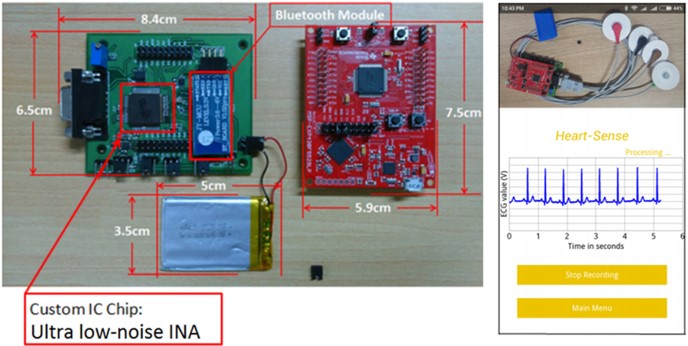This innovation provides a method for optimizing noise in an Electrocardiography (ECG) signal. The method comprises classifying, through a classifier, biological signals according to one or more artifacts associated with the biological signal for obtaining classified signals. The method further comprises mapping, the classified signals to one or more prestored mapping methods. Each mapping method of the one or more prestored mapping methods stores reference signals. The method further comprises identifying, a correlation between the classified signal and the reference signal and filtering, the classified signal and the reference signal for removing each of a noise and the artifacts from the classified signals by using a predefined filtering method. It also provides a system for executing the method for optimizing noise in ECG signals.
The challenge in Electrocardiography (ECG) lies in accurately interpreting heart signals amidst noise and motion artifacts, which can obscure critical diagnostic information. Existing methods often struggle to effectively filter out these disruptions without distorting the underlying ECG signal, particularly in environments where patient movement is prevalent. This invention provides a method and system designed to address these issues by first classifying biological signals to identify artifacts, then mapping them to predefined filtering methods. By correlating and filtering signals based on stored reference data, the system effectively removes noise and motion artifacts, ensuring that clinicians receive clear and reliable ECG readings essential for accurate diagnosis and monitoring of cardiac conditions.
- The adaptation of step size is based on the estimated motion artifact so that an optimum between convergence time and distortion-less output is achieved.
- The Extract-Filter-stitch method for motion artifact reduction is proposed where the QRS complex in ECG raw data is extracted and remaining signal (raw ECG - QRS) will be passed through a low pass filter. Then, stitch the QRS signal back to the filtered signal to give a clean ECG signal. The advantage of this method is that the peak to peak amplitude of the QRS complex will not have any loss.
- Various types of Electrodes (for example wet gel electrodes, dry electrodes, etc.) may be used to interface with this system.
- Semi-automatic adjustment to find the optimum placement of the system with feedback from the software regarding signal strength.
The apparatus can be hand-held or wearable according to the requirement of the user. The wearable platforms proposed are as follows:
- A shirt based wearable system
- A belt based wearable system
- A patch based wearable system with electrodes on the back
Proof of concept with the lab prototype using actual acquired ECG signals in the presence of ambient noise and motion artifacts has been demonstrated.
5
Health monitoring is made significantly easier with this technology as it improves upon recorded signals by cleaning out artifacts, has a potential to make diagnosis easier for healthcare professionals.
- Medical Devices: Reduction of noise in biological signals like ECG, EMG and EEG
- Wearable Technology: Wearable health measurement devices
Geography of IP
Type of IP
201821007553
428653

